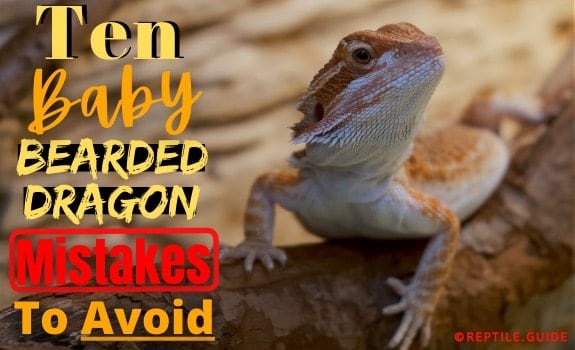
A Comprehensive Guide to Nurturing Your Bearded Dragon Baby
Bearded dragons, captivating reptiles native to the arid regions of Australia, have gained immense popularity as exotic pets. Their docile nature, endearing personalities, and relatively low maintenance requirements make them suitable companions for reptile enthusiasts of all experience levels. However, caring for a baby bearded dragon poses unique challenges that require meticulous attention to detail. This comprehensive guide will provide you with the essential knowledge and practical tips to ensure the well-being and thriving of your scaled companion.
Housing Requirements
The foundation of proper bearded dragon care lies in providing an appropriate habitat that mimics their natural environment.
-
Enclosure: Baby bearded dragons require a spacious enclosure that allows them ample room to move around, bask, and hide. A 20-gallon tank is a suitable size for hatchlings, while juveniles may require a 40-gallon or larger enclosure. Ensure the enclosure has adequate ventilation and a secure lid to prevent escapes.
-
Substrate: The substrate, or bedding material, should be safe and absorbent. Avoid using materials like sand, which can cause impaction if ingested. Recommended substrates include reptile carpet, paper towels, or a mixture of topsoil and play sand.
-
Lighting: Bearded dragons are diurnal, meaning they are active during the day. Provide a 12-hour light cycle with a combination of UVB and UVA lighting. UVB rays are essential for calcium absorption and bone development, while UVA rays help regulate appetite and activity levels.
-
Temperature Gradient: Bearded dragons are ectothermic, meaning they rely on external heat sources to regulate their body temperature. Create a temperature gradient within the enclosure, with a basking spot of 105-110°F (40-43°C) and a cool side of 75-85°F (24-29°C). Use a thermometer to monitor temperatures and adjust the heat sources accordingly.
-
Hides: Provide multiple hiding places within the enclosure, such as caves, rocks, or artificial hides. These offer security and a sense of privacy for your bearded dragon.
Feeding
Bearded dragons are omnivorous, with a diet consisting of both live insects and plant matter.
-
Insects: Live insects should constitute the majority of a baby bearded dragon’s diet. Offer a variety of insects, such as crickets, dubia roaches, mealworms, and silkworms. Dust insects with a calcium supplement 2-3 times per week.
-
Vegetables: Introduce vegetables into your bearded dragon’s diet as they mature. Suitable vegetables include collard greens, dandelion greens, mustard greens, and bell peppers. Chop vegetables into small pieces and offer them daily.
-
Water: Provide a shallow water dish filled with fresh water at all times. Bearded dragons do not typically drink much water, but it is essential for hydration.
Handling and Socialization
Bearded dragons can be handled gently, but it is important to respect their boundaries.
-
Handling: Handle your bearded dragon regularly, but avoid excessive handling. Start by offering your hand inside the enclosure and allowing them to climb on. Support their body and avoid grabbing them by the tail.
-
Socialization: Bearded dragons can be socialized with other bearded dragons of the same sex. Introduce them slowly and under supervision to avoid aggression.
Health and Hygiene
Maintaining good hygiene and monitoring your bearded dragon’s health is crucial for their well-being.
-
Bathing: Bathe your bearded dragon once a week in lukewarm water. This helps shed old skin and prevents dehydration.
-
Cleaning: Clean the enclosure regularly to remove waste and prevent bacterial growth. Disinfect the enclosure and all accessories thoroughly once a month.
-
Veterinary Care: Establish a relationship with a veterinarian who specializes in reptiles. Schedule regular checkups to monitor your bearded dragon’s health and address any concerns promptly.
Common Health Issues
Understanding common health issues in bearded dragons can help you provide prompt treatment if necessary.
-
Metabolic Bone Disease: This condition occurs due to calcium deficiency and can lead to weak and deformed bones. Ensure adequate UVB lighting and calcium supplementation.
-
Impaction: Ingesting foreign objects, such as sand or substrate, can cause impaction. Symptoms include lethargy, loss of appetite, and constipation.
-
Respiratory Infections: Bearded dragons can develop respiratory infections due to improper temperature or humidity levels. Symptoms include sneezing, wheezing, and nasal discharge.
Conclusion
Caring for a baby bearded dragon is a rewarding experience that requires patience, attention to detail, and a commitment to their well-being. By providing an appropriate habitat, feeding them a balanced diet, handling them gently, maintaining good hygiene, and monitoring their health, you can ensure your scaled companion thrives and brings you years of joy. Remember, every bearded dragon is unique, and their individual needs may vary. Consult with a veterinarian if you have any concerns or questions regarding your pet’s health or care.
